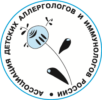The rationale for the use of the combined method of immunocorrection in children with allergic bronchial asthma
E.G. Asiryan 1, O.V. Matyuschenko 1, O.N. Matsuk 1, N.D. Titova 2
1 Vitebsk State Medical University, Vitebsk, Belarus
2 Belarusian Medical Academy of Postgraduate Education, Minsk, Belarus
ALLERGOLOGY AND IMMUNOLOGY IN PEDIATRICS, Volume 62 • Number 3 • September 2020, pp. 39 – 48
DOI: 10.24411/2500-1175-2020-00005
The purpose of the work is to study the clinical and immunological effectiveness of using autoserotherapy, ultrasound, as well as their combined use in children with allergic bronchial asthma.
Materials and methods. During the work, 102 children aged 6 to 18 years with bronchial asthma were examined. Group A included 19 patients who received autoserotherapy. Group B patients (19 children) received ultrasound therapy in the spleen area. In group C (32 children), autoserotherapy was combined with ultrasound treatment. 32 patients with group D bronchial asthma made up the comparison group. All children included in the study received basic treatment (inhaled glucocorticosteroids).
Results. Carrying out autoserotherapy in patients with bronchial asthma caused a statistically significant decrease in CD4+CD25+ T-lymphocytes (p1-3rel.<0,05; p1-3abs.<0,05), as well as a significant increase in CD19+CD23++ B-lymphocytes through 82–90 days from the start of the study (p2-3abs.<0,05). After ultrasound therapy, after 12–15 days, a statistically significant decrease in the absolute level of CD4+CD25+T-lymphocytes was observed (p1-2abs.<0,05). The combined use of ultrasound exposure with autoserotherapy leads to an increase in the level of control of bronchial asthma, the indicators are statistically significantly higher in comparison with patients in whose treatment only basic therapy was used (pC-AСT2 <0,05; pC-AСT4<0,001; pAСT2<0,05 ; pAСT3<0,01; pAСT4<0,001). In this group of children, the level of CD4+CD25+ T-lymphocytes, CD19+CD23++ B-lymphocytes was statistically significantly reduced, was significantly lower than in the group of patients in whose treatment only basic treatment was used (pЕ2-В2abs. CD4+CD25+<0,05; pE3-B3abs. CD19+CD23++<0,05).
- Lauer S. The Advance of Personalized and Stratified Therapies in Bronchial Asthma: Phenotypes — Endotypes — Biomarkers / S. Lauer, Renz // The Journal of the international federation of clinical chemistry and laboratory medicine. — 2013. — Vol. 24. — № 3. — P. 113–125.
- Global Initiative for asthma — NHLBI/WHO Workshop Report. National Heart Lung Blood Institute, updated 2016. [Electronic resource]. — 2016. Mode of access: ginasthma.org. — Date of access: 20.12.2017.
- Белевский А.С. Современная терапия бронхиальной астмы, шаг вперед / А.С. Белевский // Астма и аллергия. — 2013. — № 1. — С. 16–18.
- Нагаткин Д.А. Оценка контроля и степени тяжести бронхиальной астмы: современная парадигма / Д.А. Нагаткин, О.В. Нагаткина, А.В. Жестков // Астма и аллергия. — 2014. — № 4. — С. 13–16.
- Чучалин А.Г. Бронхиальная астма: новые перспективы в терапии / А.Г. Чучалин // Терапевтический архив. — 2012. — Т. 84, № 3. — С. 5–11.
- Global and regional mortality from 235 causes of death for 20 age groups in 1990 and 2010: a systematic analysis for the global burden of disease study 2010 / R. Lozano [et al.] // Lancet. — — Vol. 380. — P. 2095–2128.
- Место антилейкотриеновых препаратов в лечении детей с бронхиальной астмой / Л.М. Беляева [и др.] // Международные обзоры: клиническая практика и здоровье. — 2014. — № 5 (11). — С. 112–129.
- Pocket Guide for Asthma Management and Prevention (for Adults and Children than 5 Years) update 2015. [Electronic resource]. — 2015. — Mode of access: ginasthma.org. — Date of access: 20.10.2017.
- Пампура А.Н. Проблемы и перспективы развития детской аллергологии / А.Н. Пампура // Российский вестник перинатологии и педиатрии. — 2015. — № 1. — С. 7–15.
- Lio P.A. Non-pharmacologic therapies for atopic dermatitis / P.A. Lio // Curr Allergy Asthma Rep. — 2013. — № 13 (5). — Р. 528–538.
- Метод лечения бронхиальной астмы у детей : инструкция по применению № 008-0118 : утв. М-вом здравоохранения Респ. Беларусь 01.02.18 / Витеб. гос. мед. ун-т; сост.: Е.Г. Асирян, П.Д. Новиков, А.В. Волотовская, Я.В. Дробыш ; ВГМУ. — Витебск, 2018. — 8 с.
- Новиков Д.К. Аутосеротерапия аллергических заболеваний / Д.К. Новиков, Л.Р. Выхристенко, О.В. Смирнова // Аллергология и иммунология. — 2008. — Т. 9, № 4. — С. 478–480.
- Новиков Д.К. Иммунокоррекция, иммунопрофилактика, иммунореабилитация / Д. К. Новиков, П. Д. Новиков, Н. Д. Титова. — Витебск : ВГМУ, 2006. — 198 с.
- Балаболкин И.И. Бронхиальная астма у детей / И.И. Балаболкин, В.А. Булгакова. — М. : МИА, 2015. — 141 с.
- Increased IgE+ B Cells in Sputum, but Not Blood, Bone Marrow, or Tonsils, after Inhaled Allergen Challenge in Subjects with Asthma / J.P. Oliveria [et al.] // Am J. Respir Crit Care Med . — — Vol. 196 (1). — P. 107–109.
- B-lymphocytes regulate airway granulocytic inflammation and cytokine production in a murine model of fungal allergic asthma / S. Ghosh [et al.] // Cell Mol Immunol. — 2015. — Vol. 12 (2). — P. 202–212.
- T-regulatory lymphocytes, atopy and asthma: a new concept in three dimensions / E. Mamessier [et al.] // Rev. Mal. Respir. — 2005. — Vol. 22. — P. 305–
- Содержание регуляторных Т-клеток в периферической крови у пациентов с бронхиальной астмой / Е.Э. Кремер [и др.] // Российский аллергологический журнал. — 2011. — № 5. — С. 21–25.
- Regulatory CD4+CD25+ T lymphocytes in peripheral blood from patients with atopic asthma / H. Z. Shi [et al.] // Clin. Immunol. — 2004. — Vol. 113. — P. 172–178.
- Пономаренко Г.Н. Общая физиотерапия, 5-е изд., перераб. и доп. / Г. Н. Пономаренко. — М. : ГЭОТАР-Медиа, 2014. — 368 с.
Asiryan EG, Matyuschenko OV, Matsuk ON, Titova ND. The rationale for the use of the combined method of immunocorrection in children with allergic bronchial asthma. Allergology and Immunology in Pediatrics. 2020;62(3):39-48. (In Russ.) https://doi.org/10.24411/2500-1175-2020-00005
For correspondense
Elena G. Asiryn, Doctor of Medical Sciences, associate professor of the Department of Pediatrics of Vitebsk State Medical University
Address: 27, Frunze Ave., Vitebsk, Belarus, 210009
E-mail: elena.asiryn@mail.ru
